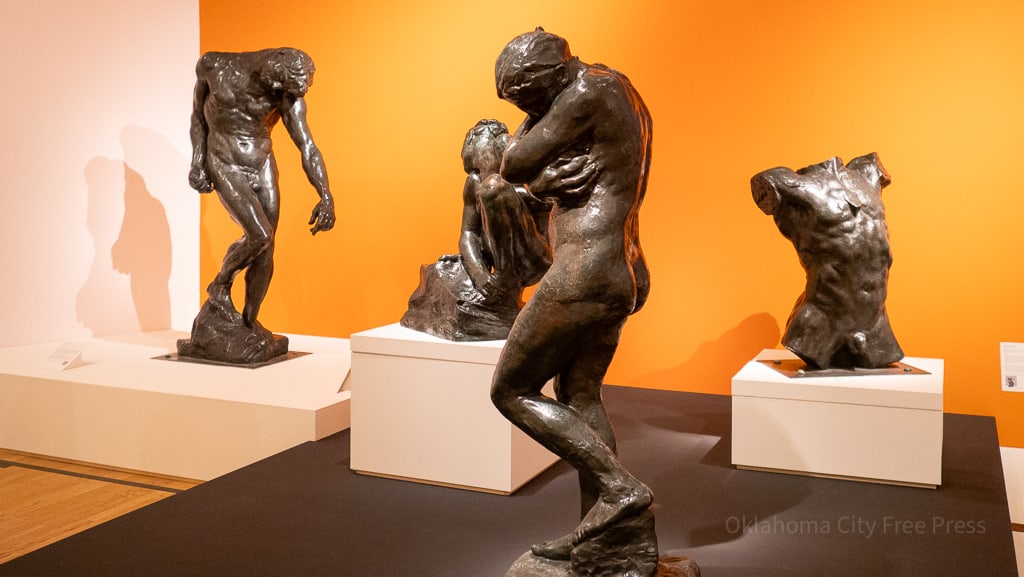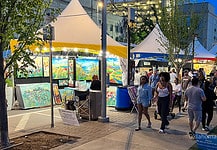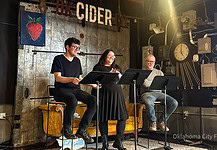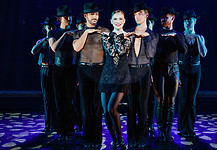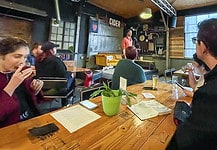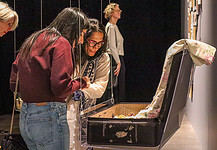Last Updated on June 16, 2023, 10:37 PM | Published: June 16, 2023
To capture the beauty of a thing is one of the most classical and obvious undertakings of art, with artists of all stripes attempting to impart the essence of an object or person for thousands of years or more.
But to capture the beauty of a moment is something else entirely.
A moment in time isn’t defined by physical, visible details, it lives in the passing light and the fleeting feelings and the less-than-momentary expressions on a face.
These were elements that the Impressionists of late-1800s Europe were exploring and attempting to represent with radical new approaches to color, posing, and even the selection of subjects themselves.
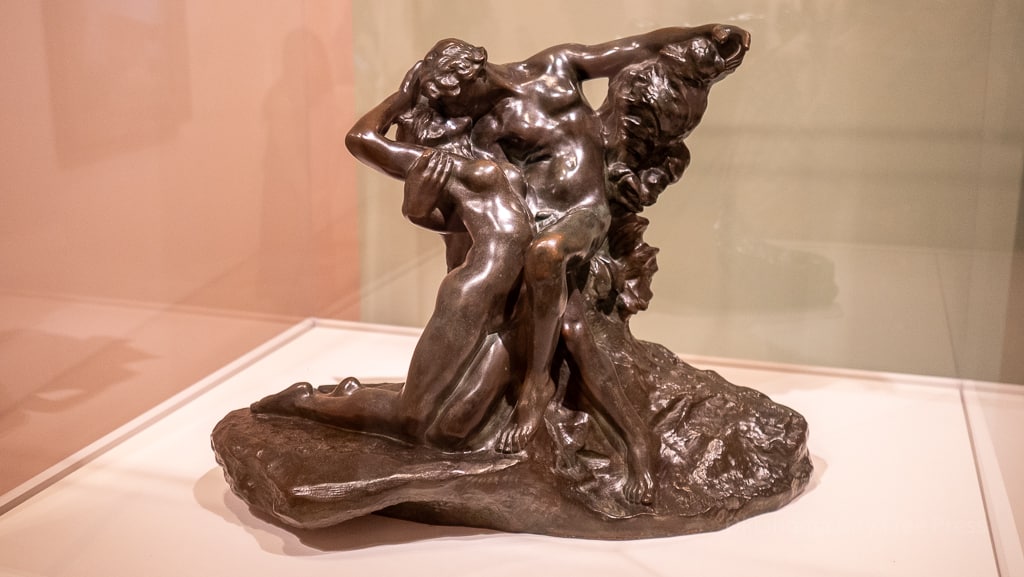
But while the giants of Impressionist painting like Monet and Renoir were experimenting with vibrant, playful color technique to evoke movement and the passage of light, Auguste Rodin – surely the greatest Impressionist sculptor in history – was attempting the same with only still, frozen figures and patina.
Oklahoma City Museum of Art will be presenting an intimate and unprecedented look at the art, process, and life of the monumental sculptor through the summer with “True Nature: Rodin and the Age of Impressionism,” opening Saturday, June 17th and running through October.
Impressions of Motion
As the exhibition’s name implies, the focus of “True Nature” is on Rodin’s impressive ability to present his figures in shocking, expressive detail, often contorted in agony or half-buried in stone as if bursting forth from the raw material or melting back into the base.
Rodin’s figures seem always in motion, always frozen in a transitory moment far beyond the usual, quietly posed still-life representations of sculpture work.
“At the time that Rodin is coming in, he’s doing something that is pretty new and pretty radical,” said OKCMOA President Michael Anderson. “He was doing work that wasn’t compatible with academic sculpture at the time.”

“True Nature” showcases that rejection of static academia with series like “The Gates of Hell,” a selection of works depicting scenes and characters pulled from Dante’s “Inferno,” all originally conceived on small scale for a densely populated engraved door sculpture, here mostly separated and cast in much larger relief.
Or “The Burghers of Calais,” life-sized representations of the captured aristocrats of the French city, created to highlight the human suffering in a stark moment on a true-life scale rather than elevating the subjects to mythology or grand heroism.
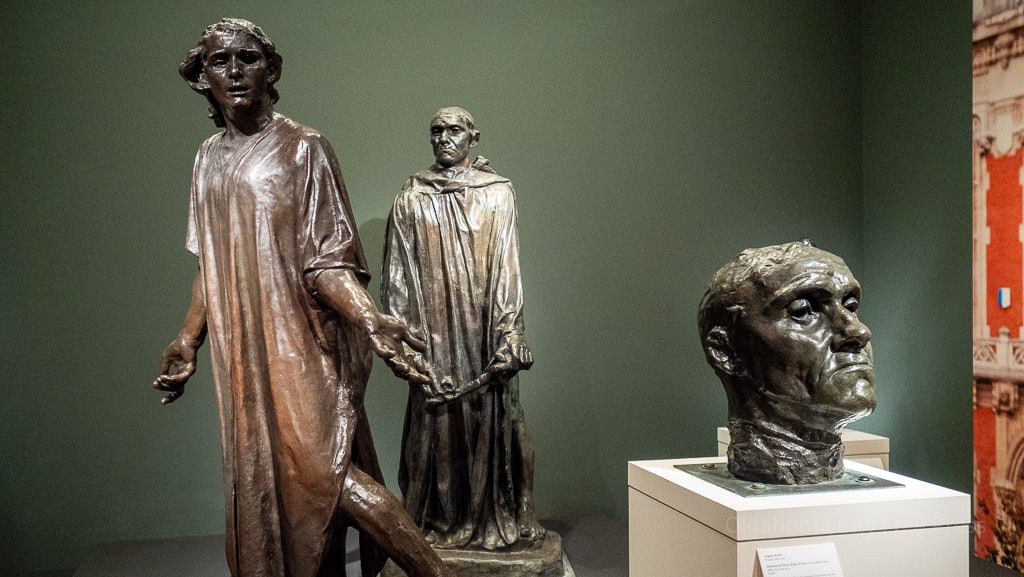
Each figure is mid-movement, sometimes stuck in a seemingly impossible pose, often representative of their torturous circumstances or most transcendent moments.
“One of the big ideas behind Impressionist painting is that it’s a fleeting moment, that there’s this single moment in time that’s passing on,” said Anderson. “Rodin is doing that in a different way in his sculpture. He’s showing movement in the way that he can.”
Peers and Inspirations
To illustrate not only the more classical artistic world that Rodin was reacting against, but also the major impact and influence that he had during his lifetime, “True Nature” also includes a number of works, writings, and photographs from many of Rodin’s peers and contemporaries.
Examples of that earlier, more academic style of sculpture are included for comparison, as are a number of painted works by Impressionist peers and friends Monet, Degas, Cezanne, and more.

“Rodin was a very good friend of Monet,” Anderson explained. “They exhibited together a number of times and even traded works. Rodin had Monet paintings and Monet had Rodin sculptures.”
Perhaps most striking of these depictions of Rodin’s influence are the number of photographs by Edward Steichen, spotlighting Rodin and his work in his own time and often framing and lighting his sculptures to make them appear as real-life moments captured by camera.
Fingerprints
Rather than presenting Rodin’s art purely for the appreciation of its beauty, “True Nature” actually turns much of its focus on the processes, techniques, and experimentation of the man himself.
One full wall in the exhibit showcases a life-sized photograph of Rodin’s studio, and another section walks viewers through a visual step-by-step of his plaster molding process.
“His studio was absolutely filled with these plasters,” Anderson said. “He’s modeling clay and then creating these plaster casts, and that’s what he’s working from.”
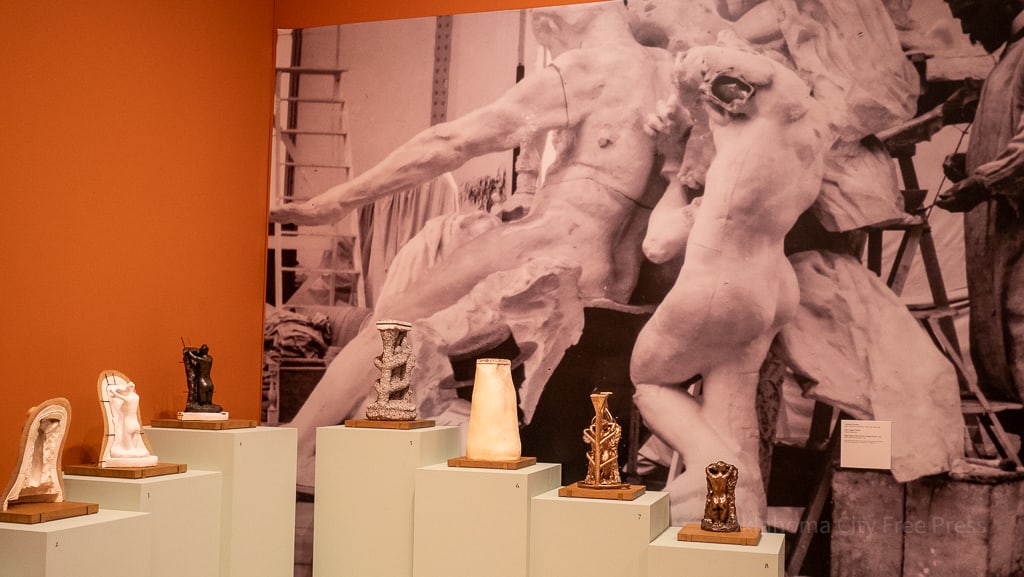
It’s a rare and remarkable look into the hands-on techniques used for this type of sculpture art, and a great accompaniment to the many pieces in the show that actually display the physical work that went into them.
“In some cases, his fingerprints are actually visible,” Anderson said. “He’s leaving a trace of his process in the same way that in an Impressionist painting, you can see the brushstrokes. You can see his hands. He’s not trying to hide these correspondences between the material and the artist.”
First time in full
“True Nature” was organized and compiled by the Los Angeles County Museum of Art, pulling primarily from their own permanent collection, but since the beginning of the exhibition’s travels, OKC is actually the first city to get the complete experience.
That’s due to the difficulty of transporting, placing, and housing the show’s coup de grâce: a 1900-pound bronze sculpture of French writing legend Honoré de Balzac draped in a flowing monk’s robe.
“We’ve been the only venue with ceilings high enough to bring in the equipment needed to stand it up,” said Anderson. “And we could only place it right here where it is on this platform that spreads out its weight.”

The gallery in which Balzac stands is much more sparse than the others in the exhibition to guarantee safety and stability with the piece’s weight, but the openness around the sculpture feels appropriate. Balzac was a towering figure of influence in Rodin’s own life, and the size and reverence inherent in the piece and its wide-open placement reflect that.
Even if only by luck, it feels fitting that a place like OKC, far removed from the pomp and exclusivity of the American coasts and the artistic hubs of Europe, should be the first on the tour to view this vital part of the collection in this starkly humanistic context.
“These are real people,” Anderson said of the figures, both historical and mythological, on display in the exhibition. “Rodin wants to give people a true sense of their reality. That was important to Balzac and it was important to Rodin.”
“True Nature: Rodin and the Age of Impressionism” opens Saturday, June 17th at Oklahoma City Museum of Art and runs to October 22nd.
For timed ticketing, schedules, and more information, visit okcmoa.com.
Brett Fieldcamp has been covering arts, entertainment, news, housing, and culture in Oklahoma for nearly 15 years, writing for several local and state publications. He’s also a musician and songwriter and holds a certification as Specialist of Spirits from The Society of Wine Educators.
